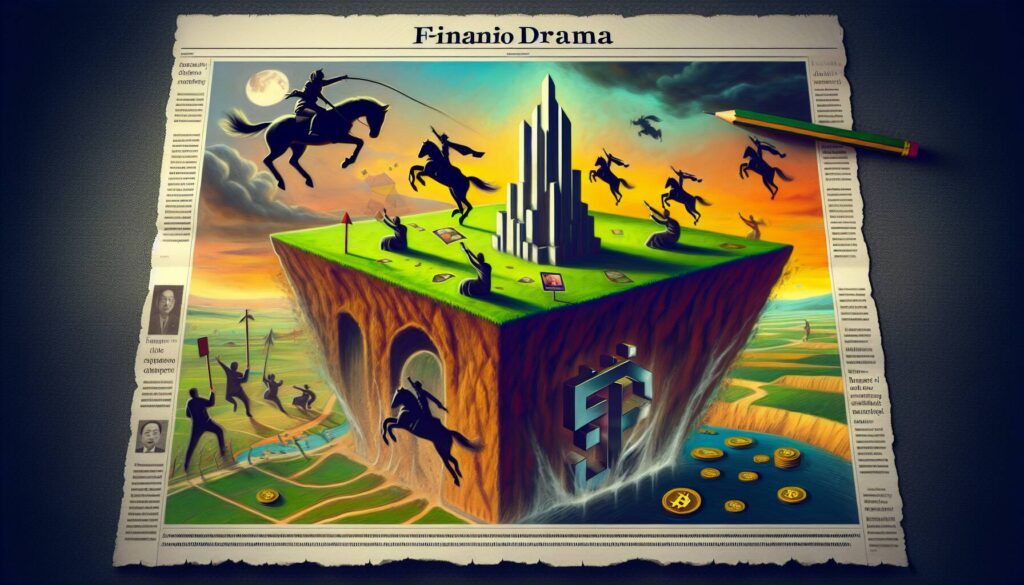In a dramatic twist in the decentralized finance (DeFi) landscape, the anticipated merger between Fei Protocol and Rari Capital concluded in failure just months after its inception. Initially celebrated as a pioneering collaboration that aimed to combine Fei’s innovative algorithmic stablecoin with Rari’s expertise in permissionless lending, this new entity, Tribe DAO, has quickly unraveled, leaving a wake of uncertainty in the crypto community.
The excitement surrounding the merger was palpable in late 2021 when its communities voted overwhelmingly in favor of this bold initiative. However, within nine short months, Tribe DAO faced significant challenges that ultimately led to its demise—a stark reminder of the volatile nature of DeFi projects. Interestingly, this merger was not an isolated incident; throughout 2021, there were over 65 mergers among decentralized autonomous organizations (DAOs), reflecting a trend towards consolidation within this rapidly evolving sector.
“Merging DAOs isn’t just about putting two treasuries together. It’s about integrating communities, governance structures, and technical systems.”
Unlike traditional corporate marriages, which often follow established protocols and legal guidelines, DAOs navigate a labyrinth of governance challenges and regulatory uncertainties. This unique structure, devoid of a central leadership, can lead to chaotic decision-making processes, as evidenced in the aftermath of the Fei-Rari deal. As communities grapple with the volatility of token valuations and the complexities of governance, many DAOs resort to innovative strategies like token migrations to sidestep traditional regulatory hurdles.
Despite these setbacks, the report from DAOstar, Areta, and Emory University posits a hopeful future for DAO M&A. Analysts assert that mergers could evolve into a potent strategy for these digital entities, provided they adopt more refined approaches to governance and valuations. By establishing clearer frameworks and security measures, DAOs can mitigate risks and potentially thrive through collaboration, setting the stage for a more resilient ecosystem.
The full report underscores the paramount importance of thoughtful integration, balancing the ambition of combining resources with the need to respect the unique cultures and governance practices of diverse communities. As DAOs continue to experiment and adapt, the successes and failures of past mergers will serve as critical lessons for shaping a more cohesive and efficient future in the world of decentralized finance.

Challenges and Opportunities in DAO Mergers and Acquisitions
The landscape of decentralized finance (DeFi) and decentralized autonomous organizations (DAOs) is rapidly evolving. Here are some key points regarding the recent merger attempts and the state of DAO M&A:
- Merger Attempts:
- The Fei Protocol and Rari Capital merger aimed to create a DeFi powerhouse but collapsed nine months later.
- Other DAOs like Gnosis-xDAI and Aragon-Vocdoni have also experienced variable degrees of success in merger attempts.
- Over 65 mergers have been executed since 2020 to help scale and consolidate DAOs.
- Governance Challenges:
- DAOs lack centralized leadership, leading to unpredictable voting outcomes and governance chaos.
- There is often confusion surrounding the responsibilities and governance among merging entities.
- Valuation Difficulties:
- Token valuations fluctuate, complicating fair pricing for acquisitions.
- Valuations need to account for token liquidity, governance power, and future earnings potential.
- Regulatory Concerns:
- The lack of legal standards creates uncertainty, preventing the implementation of valuable agreements.
- DAOs are turning to token migrations and swap contracts as workarounds to these regulatory challenges.
- Security Issues:
- Hacks pose significant threats, with incidents like the Rari exploit resulting in substantial losses for token holders.
- Security must be prioritized through rigorous smart contract audits and stress tests.
- Future of DAO M&A:
- With proper alignment of governance and stakeholder incentives, DAOs can execute M&As efficiently.
- More thoughtful frameworks for valuation and governance can help avoid the pitfalls seen in previous attempts.
- M&A could become a powerful tool for building resilient decentralized organizations.
“Merging DAOs isn’t just about putting two treasuries together; it’s about enhancing the value of organizations through integrated communities and governance structures.”
Understanding these challenges and opportunities in DAO mergers can impact readers by highlighting the importance of developing solid frameworks for future engagements in the DeFi space. This knowledge could empower individuals to participate effectively and make informed decisions in this evolving ecosystem.
Dissecting the Turbulent Landscape of DAO Mergers and Acquisitions
The recent downfall of the Fei Protocol and Rari Capital merger, leading to the abrupt collapse of Tribe DAO, underscores the challenges that decentralized autonomous organizations (DAOs) face in navigating mergers and acquisitions. While the concept of DAOs collaborating to create a more robust ecosystem is enticing, this example—and others like it—reveals a patchwork of chaos where effective governance and clear valuation processes are sorely lacking. This phenomenon is not an isolated incident; several other mergers, including Gnosis and xDAI, show varied success levels and highlight the need for clearer frameworks as more than 65 DAOs have attempted consolidation since 2020.
Competitive Advantages: The potential benefits of merging DAOs lie in their ability to streamline operations and drive efficiencies beyond what traditional organizations can achieve. DAOs can theoretically capitalize on synergies more effectively, leveraging the collective intelligence and assets of both entities. They are nimble, often able to make decisions faster than traditional corporations mired in bureaucracy. Moreover, decentralization means that a diverse group of stakeholders can contribute to a richer decision-making process, potentially leading to innovative solutions that a top-down approach might miss.
Competitive Disadvantages: However, the chaotic nature of governance presents significant obstacles. The lack of a centralized leadership structure can result in conflicting interests among token holders, leading to unpredictable decision-making outcomes. This inherent unpredictability can ignite conflict, as witnessed with the governance debacle seen in the Aragon community. Additionally, fluctuating token values complicate valuations, causing frustrations among stakeholders as seen during the fallout from the Fei-Rari merger. Furthermore, the absence of legal frameworks for DAO transactions increases regulatory risks, making the entire landscape precarious.
Despite these hurdles, the evolving landscape of DAO M&A could benefit various stakeholders. For opportunistic DAOs, successful mergers could mean newfound resources, diversified offerings, and expanded user bases. However, for individual token holders and smaller DAOs, the risks might escalate if larger, more powerful entities dominate the landscape, leading to concentration issues and potential stifling of smaller voices within the ecosystem. Moreover, security vulnerabilities become an even more pressing concern as mergers increase complexity, raising the stakes for potential hacks and exploits.
As the community moves forward, improved governance frameworks and thoughtful strategies regarding valuations and security must take center stage. If DAOs can learn and adapt from these initial experiments and navigate the intricacies of integration, they have the potential to construct a resilient, scalable future for decentralized organizations, creating an ecosystem rife with opportunities for innovation and collective growth.
















